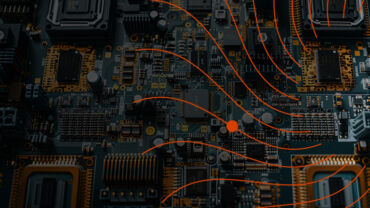A company’s decision to introduce indirect tax (IDT) automation into its tax processes is often fraught with indecision and uncertainty. Every company’s tax technology journey is different, and it’s not always clear when and how tax automation should be incorporated or what the benefits will be.
During their Synergy 2022 presentation, Joe Malloy and Chandra Wing from BDO’s Indirect Automation team discussed questions they say companies should ask themselves before investing in IDT automation.
Thomson Reuters asked Malloy and Wing for further guidance on the topic. Their answers provide a helpful roadmap for corporate leaders who are interested in automated tax solutions but need more information about what factors to consider and challenges to expect.
1. Thomson Reuters: How are certain trends in politics, culture, technology, or industry affecting businesses?
Wing: Outside factors beyond a company’s control tend to influence decision-making inside. Regional disputes, supply-chain disruptions, technological progress, labor shortages, and regulatory changes are only a few of the issues that may prompt a company to rethink its operations. Agility, flexibility, and efficiency are qualities that most companies want, but aging systems and antiquated processes are often holding them back. Inflection points like these – where failing to respond presents a greater risk than acting – are ideal times to consider switching to an automated IDT system.
2. Thomson Reuters: If a business has plans to implement any system changes now or in the near future, should indirect tax (IDT) automation be considered?
Malloy: Anytime an ERP system is being implemented or upgraded, there is a window of opportunity to discuss tax automation as part of the process. Deciding which processes to automate will take some deliberation, because all companies are different – but IDT is a logical place to start. The earlier tax is involved in the discussion the better, however, because buy-in from the top is key. And even if the project gets approved, cross-departmental discussions and support – from accounts payable, procurement, finance, IT, etc. – are crucial, especially if the new ERP is going to enable enterprise-wide data-sharing.
3. Thomson Reuters: If a business is doing tax determination and rate management manually, is it feasible that the tax team can keep up?
Wing: A common automation tipping point for many growing companies that still handle tax determination manually is when the volume and variety of product sales begin to outpace the tax department’s ability to keep up. That’s when morale begins to erode, errors creep in, service declines, and employees start wondering out loud how sustainable the current system is. Introducing automation at this point can boost morale and give the tax team a new goal to work toward: life after automation – that is, when machines are doing the grunt work and the tax pros are more involved in compliance, analysis, strategy, and business development.
4. Thomson Reuters: Are there risks with non-tax professionals determining tax?
Wing: A hidden benefit of sales tax automation is that it prohibits nontax professionals from determining the tax, thus reducing the risk of errors and violations. The software keeps all the rules, policies, rates, and codes up to date. This removes the burden from these internal teams who may not be familiar with specific compliance requirements and may inadvertently overlook critical tax obligations, leading to noncompliance.
5. Thomson Reuters: What can be done if tax calculations are not as fast and accurate as a business would like them to be?
Malloy: One of the things tax automation does best is improve the speed and accuracy of repetitive tax calculations (VAT/GST, sales and use, excise). If you are still doing tax calculations manually, one way to determine if IDT automation will help is to look at your team’s error rate. If it’s 3% or higher, automation may help. In a recent Forrester Consulting Research paper on the economic impact of IDT automation, companies with a 3% manual error rate were able to reduce errors to less than 1%, thereby saving money, improving cash flow, delivering better customer service, and avoiding the headache of having to recalculate taxes to find and fix errors.
 |
|
6. Thomson Reuters: Are there risks with having multiple billing or purchase systems?
Wing: Companies that have multiple business systems for billing, purchasing, payroll, and accounting typically got there by stitching piecemeal legacy systems and departments together over time. Though it involves a significant transformation in workflows, processes and in some cases, culture, an enterprise-wide ERP system can streamline operations significantly by automating the most repetitive processes, including IDT compliance. If it’s a cloud-based ERP, such a system can also provide a centralized platform for data-sharing and communication between departments, which can help position the company for future growth and position tax within the overall business strategic planning.
7. Thomson Reuters: What should businesses be aware of if their nexus footprints expand into new states?
Malloy: Companies expanding into new states are typically at a pivotal point in their development when growth is stressing the viability of current systems and the complexity of managing sales in multiple states begins to multiply. Depending on how much growth is expected or planned, it usually makes sense to improve the company’s technological capabilities as the business evolves. A well-supported third-party IDT solution can help manage the tax burden of operating in multiple states by automatically calculating tax rates according to the specifications of each individual state, city, or jurisdiction. How many states a company wants to operate in doesn’t matter, either, because the software can scale as the company grows.
8. Thomson Reuters: Can indirect tax automation help businesses that have paid significant amounts under audit recently or on a recurring basis, or are consistently filing refund claims?
Wing: Again, one of the advantages of automating IDT processes is more accurate and efficient tax operations overall. Inefficient, error-prone tax processes can cost a company plenty, especially if audits continually reveal discrepancies that require a tax team’s time and attention to address. Automating IDT not only supports accurate tax calculations on the front end, but it also results in cleaner audits and filings, which means less time spent correcting errors and chasing refunds.
9. Thomson Reuters: What conversations should take place if a business is involved in M&A activity, now or in the future?
Malloy: One of the trickiest aspects of any merger or acquisition is integrating and consolidating disparate business systems. Preserving legacy tax systems rarely makes sense in a merger but consolidating tax automation across the new enterprise often does. Tax must be included in the conversation from the beginning, however, because design, configuration, and testing of a new system must be done in coordination with IT and other departments. Nevertheless, the upheaval of an M&A tech transition is another opportune time to discuss the many benefits of automating IDT, as well as the difficulties that will arise if indirect tax isn’t automated.
Automating indirect tax prior to the onset of the business sale process makes that process go more efficiently as well. The buyer in the transaction wants to ensure any tax exposure related to the business has been managed, and implementing the IDT solution is one way to clean up tax processes and mitigate that exposure. This means the seller who undertakes the automation project realizes more immediate value from the sale because less funds are set aside into escrow to cover potential exposures.
Browse our related resources to help you evaluate the benefits that indirect tax technology will provide you and your organization:
|
|
 |
|











